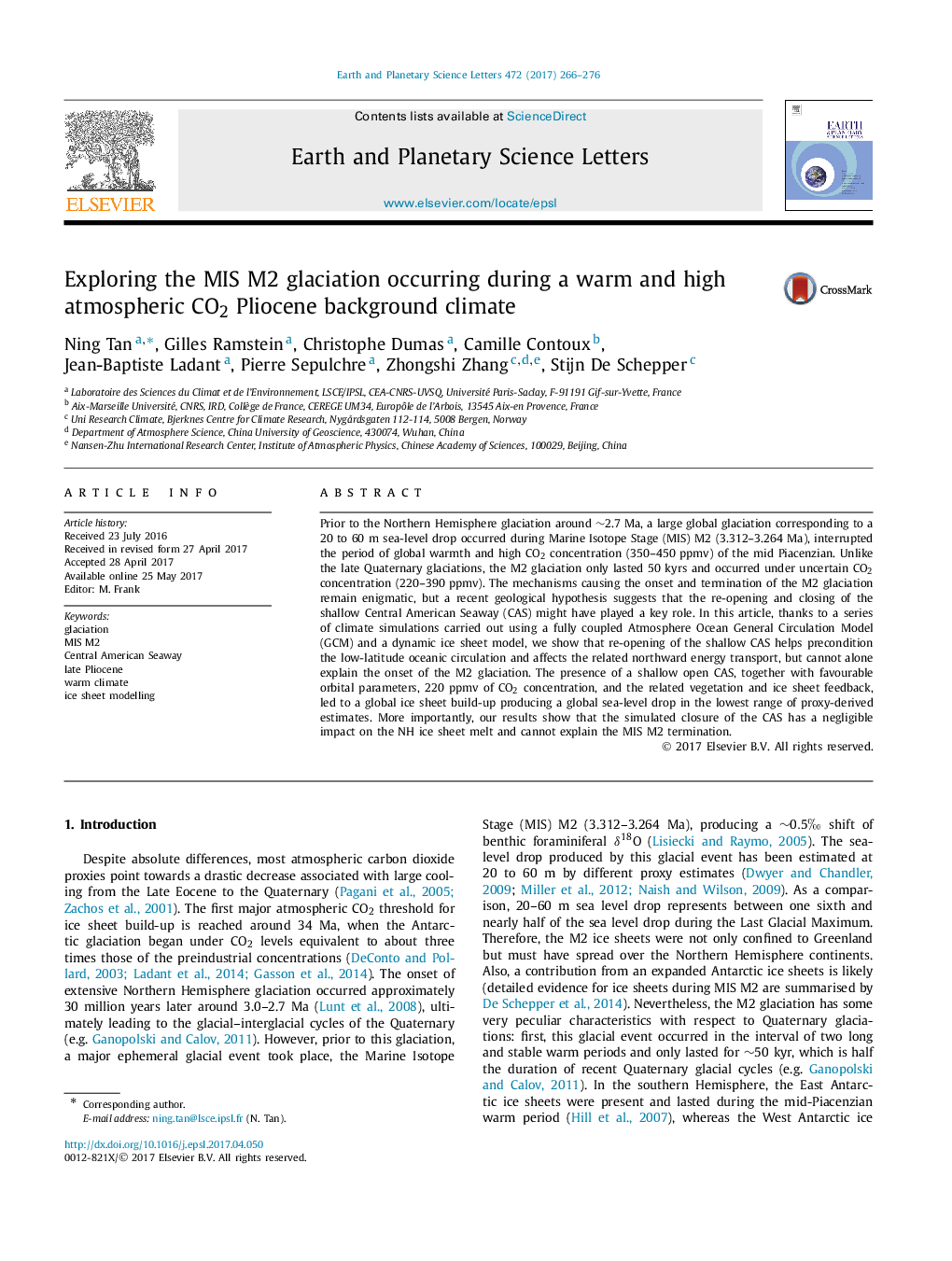| Article ID | Journal | Published Year | Pages | File Type |
|---|---|---|---|---|
| 5779517 | Earth and Planetary Science Letters | 2017 | 11 Pages |
â¢Test the “re-opening shallow Central American Seaway” assumption for M2 glaciation.â¢Explore the mechanism for M2 glaciation inception.â¢Provide a scenario of the ice sheet expansion during M2 period.â¢Demonstrate the importance of the large lowering of pCO2 for M2 glaciation.
Prior to the Northern Hemisphere glaciation around â¼2.7 Ma, a large global glaciation corresponding to a 20 to 60 m sea-level drop occurred during Marine Isotope Stage (MIS) M2 (3.312-3.264 Ma), interrupted the period of global warmth and high CO2 concentration (350-450 ppmv) of the mid Piacenzian. Unlike the late Quaternary glaciations, the M2 glaciation only lasted 50 kyrs and occurred under uncertain CO2 concentration (220-390 ppmv). The mechanisms causing the onset and termination of the M2 glaciation remain enigmatic, but a recent geological hypothesis suggests that the re-opening and closing of the shallow Central American Seaway (CAS) might have played a key role. In this article, thanks to a series of climate simulations carried out using a fully coupled Atmosphere Ocean General Circulation Model (GCM) and a dynamic ice sheet model, we show that re-opening of the shallow CAS helps precondition the low-latitude oceanic circulation and affects the related northward energy transport, but cannot alone explain the onset of the M2 glaciation. The presence of a shallow open CAS, together with favourable orbital parameters, 220 ppmv of CO2 concentration, and the related vegetation and ice sheet feedback, led to a global ice sheet build-up producing a global sea-level drop in the lowest range of proxy-derived estimates. More importantly, our results show that the simulated closure of the CAS has a negligible impact on the NH ice sheet melt and cannot explain the MIS M2 termination.
